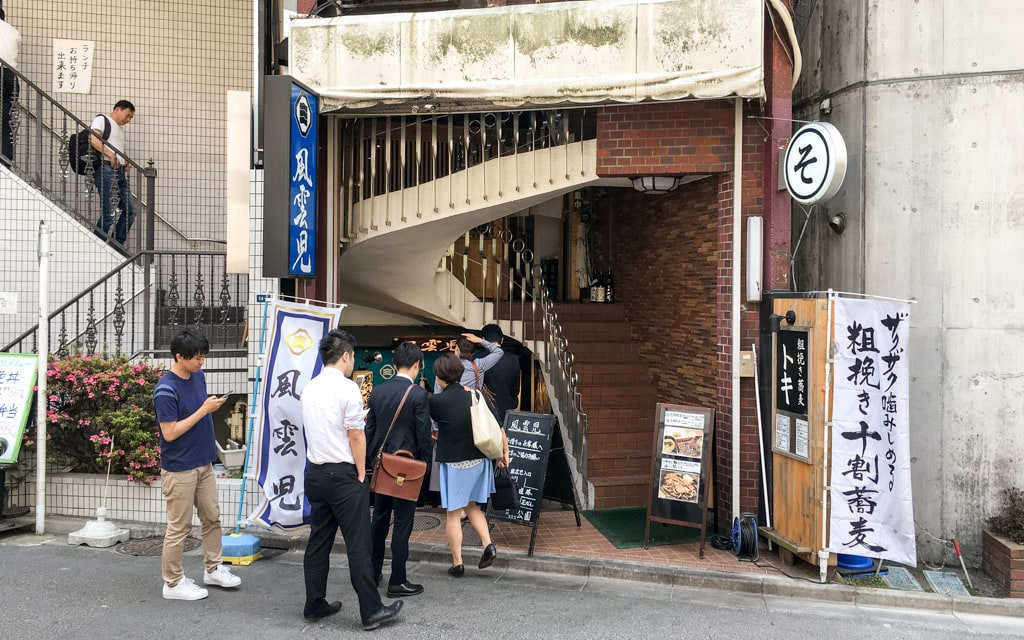
The first time I tasted a bowl of tsukemen was at Fuunji, a small ramen shop hidden on a quiet street near Shinjuku Station in Tokyo, Japan. Fuunji is considered by many, including me, to serve the best bowl of tsukemen in Tokyo. Every time I return to Tokyo, I stop by Fuunji first.
Even with its hidden location, Fuunji is no secret. You should always expect a line out the door, and even once inside, the line continues. Don’t be intimidated by the line, as turnover is high. The line moved fast on my visit as people ordered, slurped down their noodles faster than humanly possible, and moved on.
If you are looking for more information about Tokyo and Japan, I highly recommend you pick up a guidebook such as Lonely Planet Best of Tokyo 2020
Table of Contents
What is tsukemen?
Tsukemen is ramen but with a twist. With tsukemen, cold noodles are served separately from the soup. To eat, pick up the noodles with your chopsticks and dip them into the hot soup. Once the noodles soak up the delicious flavors of the soup, slurp away—the louder, the better.
Interior of Fuunji
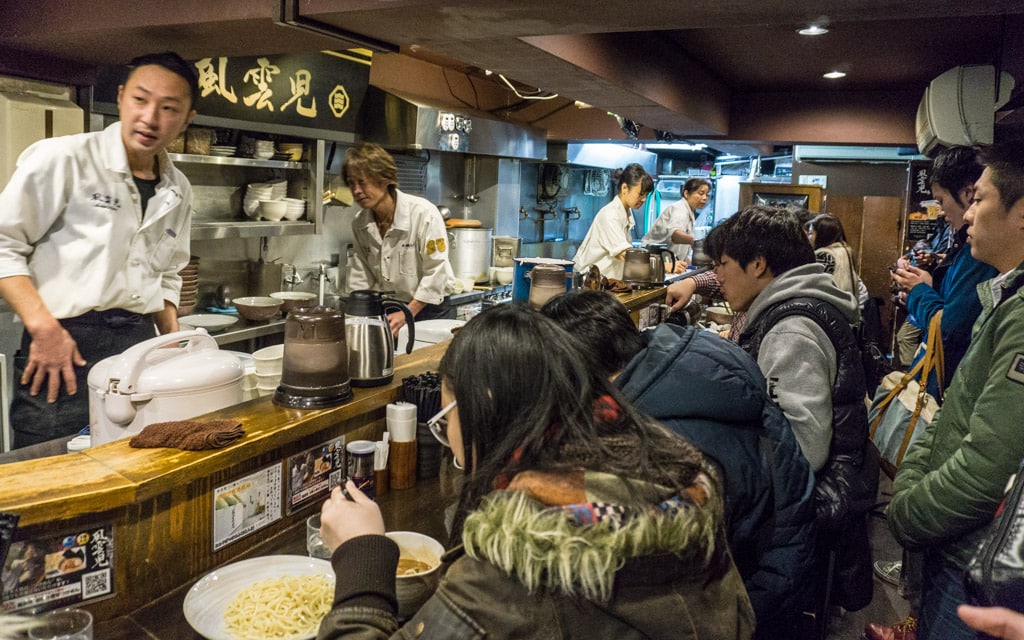
The interior of Fuunji was cozy, almost claustrophobic, given the number of people inside. The design was simple, with dim lighting, dark brown walls and flooring, low ceilings, and many wooden elements.
With everyone eating and not talking, the place was quiet except for Japanese pop music blasting away on speakers in the front and back of the restaurant.
The restaurant’s centerpiece was the large open kitchen operated by a group of chefs in white jackets. All the chefs seemed to calmly flow around the kitchen in a magical, almost choreographed way. Everyone seemed to have a specific job. Workers took tickets, directed customers, boiled noodles, cleaned, and tended to the big metal pots of broth on the stoves.
Wrapping around the kitchen was a long wooden bar. This bar was busy with customers, primarily businessmen, sitting elbow to elbow, slurping down delicious bowls of tsukemen. For me, it doesn’t get better than that. Fuunji is the type of place where I will travel around the world to experience.
Ordering at Vending Machine at Fuunji
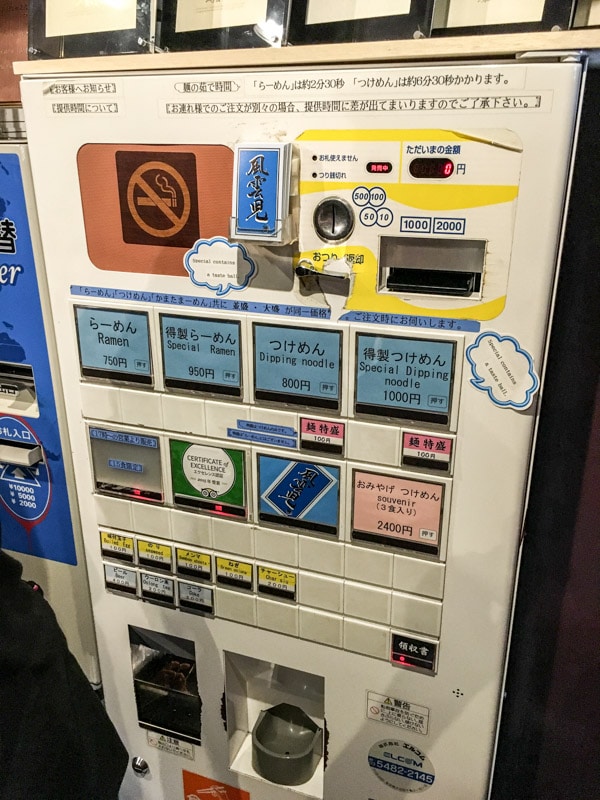
When you finally enter the restaurant, you will notice a vending machine tucked into the corner. This vending machine is where you place your order. Ordering from vending machines was a common occurrence for me at ramen joints in Japan.
There were four options to choose from. There were two types of ramen (ramen and special ramen) and two types of tsukemen (dipping noodle and special dipping noodle). The special options included an egg and pork belly.
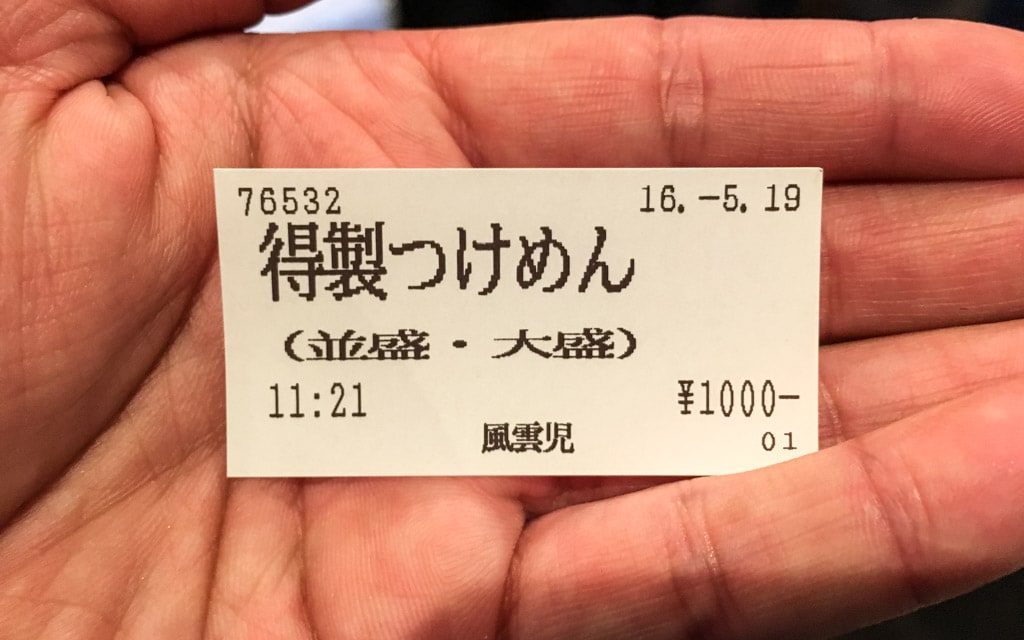
Ordering was simple, with English descriptions. All you have to do is insert cash or coins into the vending machine, press down on your choice, and take your printed ticket and any change. Having the correct change with you is a good idea, as the vending machine only accepted 1000 and 2000 yen notes and 10, 50, 100, and 500 coins.
Since Fuunji is known for its tsukemen, I recommend the tsukemen over the ramen.
With a ticket in hand, it’s time to eat, right? Not so fast. The line that started outside continued across the back wall of the restaurant. Those waiting in line had to awkwardly stand behind those already sitting and eating at the bar.
Being hungry and having to stand directly behind other patrons eating their tsukemen can be torture. The line moved slower when I was hungry.
After 20 minutes, I was almost at the front of the line. At this point, one of the workers behind the counter took the printed ticket I had gotten from the vending machine and asked what portion of noodles I would like: medium or large.
You pay the same price regardless of the portion size you choose. Just be aware that the large, at 400 grams (14 ounces) of noodles, is large. Make sure you eat what you order. It’s good manners, and the chef will be happy.
Deluxe Tsukemen (Special Dipping Noodle)
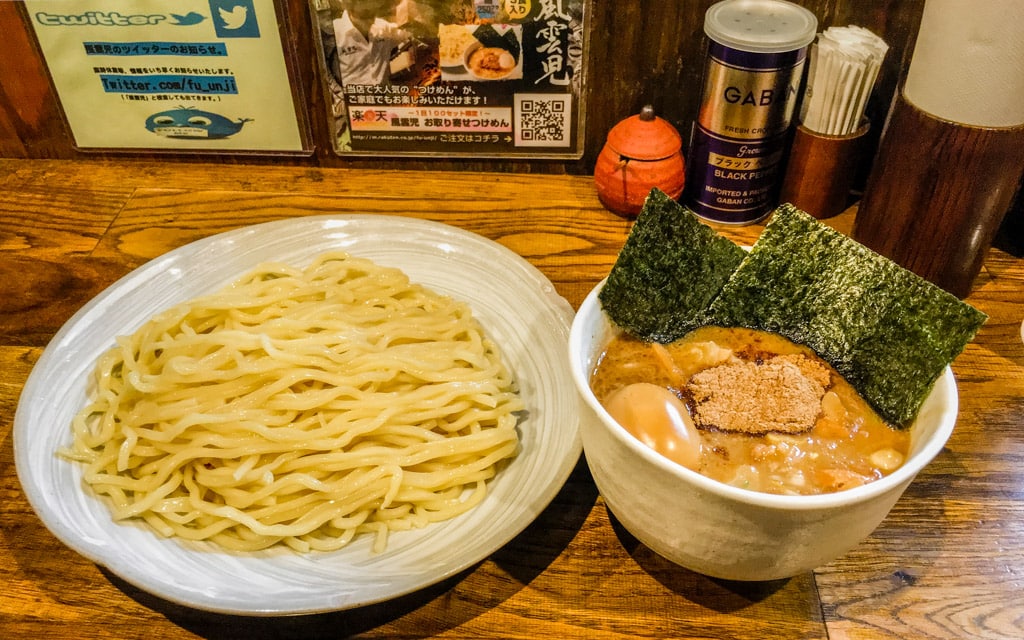
Each time I visit Fuunji, I have to order the same thing: Deluxe Tsukemen, also called Special Dipping Noodle (1000 yen).
As mentioned before, I had the option of medium or large at no extra charge. If you are hungry, go for the large, but be prepared to be in a food coma for the rest of the day. I know I was.
As soon as I sat down, my order of tsukemen and a glass of water were in front of me. A massive serving of noodles was on one plate, and next to the noodles was a beautiful bowl of broth.
Words cannot describe the broth’s complexity, taste, textures, and flavors. It was like nothing I had tasted before. It was umami. Each bite of the thick brown broth was unbelievably rich with just the right amount of salt.
What made the tsukemen broth so special were the multiple layers of flavors and textures, which complemented each other and balanced out the dish.
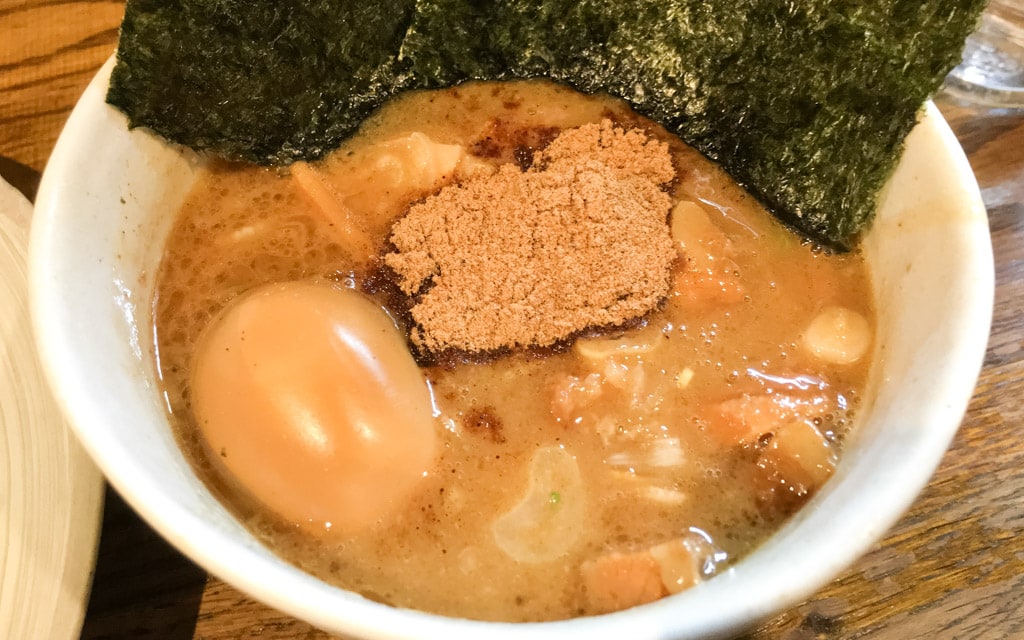
The chefs simmered chicken bones for hours to create the broth’s base. Salty and smoky dried bonito dashi powder added to the broth’s complexity. This powder added a strong yet savory seafood flavor that complemented the chicken broth. Some might find the dashi overpowering and salty, but I enjoyed it.
The broth also contained dashi powder, nori, pork, a soft-boiled egg, and bamboo shoots.
The nori (seaweed) sheets added salty seafood notes to the soup, while the thinly sliced bamboo shoots added a crunchy texture.
Mixed into the soup were thick chunks of fatty, tender, salty, and slightly sweet pieces of pork belly that just melted in my mouth. The pork helped intensify the flavors of the already mouthwatering broth.
While simple, the egg were perfect. The slightly runny and rich golden yolk mixed in with the broth when I cut into it. In Japan, they sure know how to cook eggs.
Large Noodles
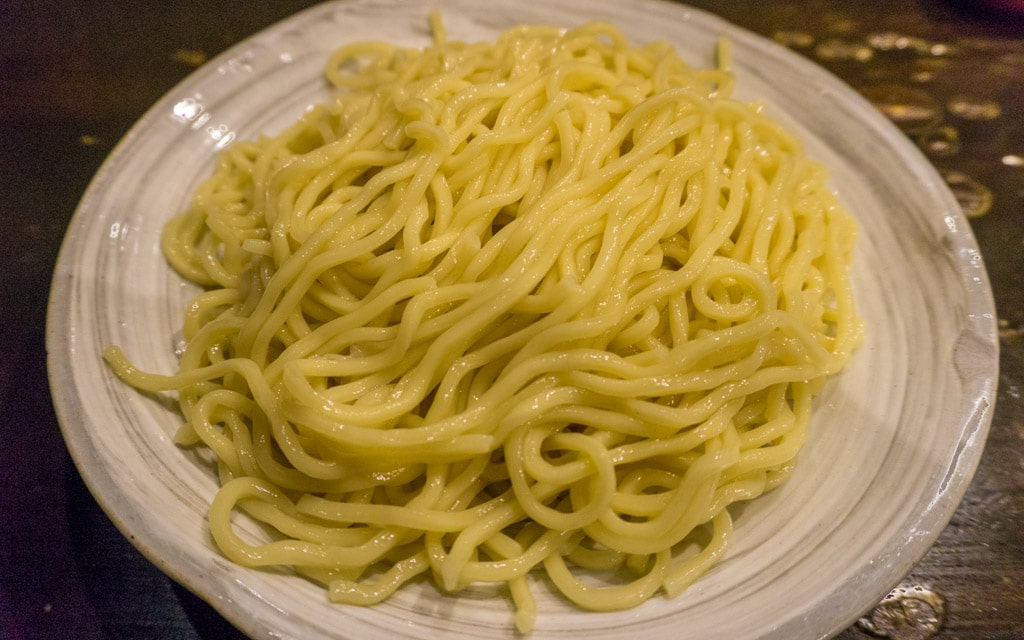
I am trying to understand why I always order a large portion of noodles. It sounds like a great idea initially, but I’m in a food coma for hours after finishing. But it’s worth it.
It might sound surprising to first-timers, but at Fuunji, the noodles were served cold. I then dipped these cold noodles into the hot broth.
The noodles may have looked simple, but they were beautifully created. They were round and wavy, with the perfect thickness. Each strand was firm but chewy, with a great bouncy bite. The texture of the noodles was just right to soak up all the chicken, pork, and seafood flavors in the soup.
Dip, slurp, repeat. You will notice this is how everyone eats their tsukemen at Fuunji. Some, as I found out, eat quicker than others. The louder you slurp, the better.
After you finish your noodles, if you still have room, grab one of the kettles on the counter, pour hot water into your bowl, and drink the remaining soup.
Service at Fuunji
Each worker at Fuunji had a specific job and knew how to serve the maximum number of people in the shortest time possible. The line moved fast as people ordered, ate, and moved on. Everything ran like clockwork.
Another great thing about visiting Fuunji was the friendliness of the employees. Even though most customers were Japanese, the workers always smiled as they greeted and served the few tourists who passed through the doors.
Conclusion
Fuunji is one of my favorite restaurants in Tokyo. It serves the best bowl of tsukemen ramen in the city.
Fuunji is the type of place that makes traveling to Japan worth it. Everything was great, from the flavors of tsukemen to the friendliness of the employees to the atmosphere of the restaurant.
I can’t wait to return to Tokyo again, where my first meal will be at Fuunji.
Pros
- The best tsukemen in Tokyo
- The layers, flavors, and textures of the broth were in a league of their own
- Open kitchen
- Friendly staff
Cons
- Always a line out the door and inside
- Cash only
- Not good for groups
- People will be standing directly behind you while you eat
Address & Contact
2-14-3, Yoyogi, Shibuya-ku, Tokyo, Japan
GPS Coordinates: 35.686881,139.696619
Hours
Monday-Saturday: 11:00AM-3:00PM and 5:00PM-9:00PM
Sunday: Closed
Map
Last Updated on April 17, 2024






Hi, I just want to clarify what you wrote about special option part. Do you have a choice of not including the pork belly and just egg? I am travelling with some Muslims and wonder if they can eat here. Thanks!!!
Xtine,
Yes, you should be able to pick and choose what you like. The language barrier could be an issue but I am sure you can manage to communicate no pork.
Also, I was told the broth was chicken based, but there could have still been pork bones. You may want to double check before ordering.